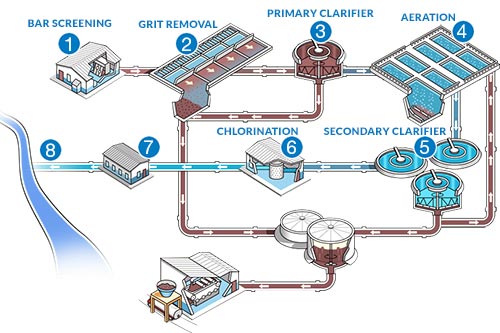The wastewater treatment process is an essential part of keeping our environment clean and safe for all. Wastewater is water that has been contaminated by human activities, such as industrial processes or sewage. Without proper treatment, this water can contain dangerous pollutants and disease-causing organisms that can harm humans, animals, and the environment. If you are thinking of cleaning the environment using the wastewater treatment process, you may go through this website.

Image Source: Google
The wastewater treatment process begins with a preliminary treatment. This is designed to remove any large debris from the water, such as trash, sticks, and rocks. The water is then passed through a series of screens and filters, which remove any smaller debris and suspended solids.
After the preliminary treatment, the wastewater is sent to a primary treatment tank. Here, bacteria and other microorganisms break down the organic matter in the water. The water is then passed through a secondary treatment system, where additional bacteria and microorganisms are used to break down the remaining organic matter.
Finally, the wastewater is sent to a tertiary treatment system. This stage further purifies the water, removing any remaining suspended solids, bacteria, and other pollutants. The water is then chlorinated to kill any remaining microorganisms.
The wastewater treatment process is an effective way to ensure clean water for everyone. Not only does it help to protect our environment from pollutants, but it also helps to protect human health by removing dangerous organisms from the water.
By following the wastewater treatment process, we can help to ensure that everyone has access to clean, safe water. This is essential for our health, our environment, and our future.